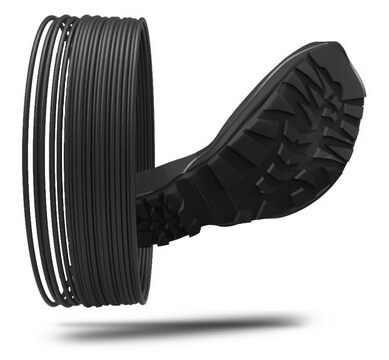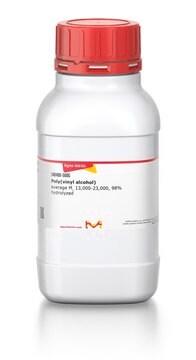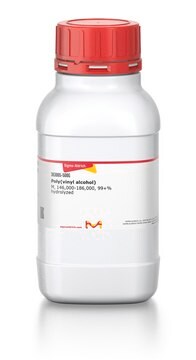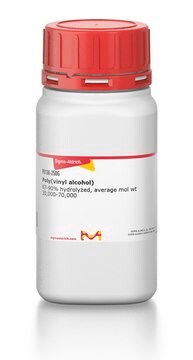901029
Polyvinyl alcohol (PVA) printing filament
1.75 mm
Synonym(e):
AquaSolve™, PVA filament
About This Item
Empfohlene Produkte
Beschreibung
Filament diameter: 1.75 ± 0.05 mm
Filament roundness: ≥95%
Melt flow rate: 14-20 g/10 min
Melt temperature: ± 163 °C
Print temperature: ±180-205 °C
Specific gravity: 1.23 g/cc
Spool Hub Diameter: 52 mm
Spool Size (D x H): 200 mm x 55 mm
Viscat softening temperature: ± 60.2 °C
Form
solid (filament)
Farbe
colorless
InChI
1S/C2H4O/c1-2-3/h2-3H,1H2
InChIKey
IMROMDMJAWUWLK-UHFFFAOYSA-N
Suchen Sie nach ähnlichen Produkten? Aufrufen Leitfaden zum Produktvergleich
Verwandte Kategorien
Allgemeine Beschreibung
Anwendung
Rechtliche Hinweise
Lagerklassenschlüssel
11 - Combustible Solids
WGK
WGK 1
Flammpunkt (°F)
49.5 °F
Flammpunkt (°C)
9.7 °C
Hier finden Sie alle aktuellen Versionen:
Analysenzertifikate (COA)
Die passende Version wird nicht angezeigt?
Wenn Sie eine bestimmte Version benötigen, können Sie anhand der Lot- oder Chargennummer nach einem spezifischen Zertifikat suchen.
Besitzen Sie dieses Produkt bereits?
In der Dokumentenbibliothek finden Sie die Dokumentation zu den Produkten, die Sie kürzlich erworben haben.
Kunden haben sich ebenfalls angesehen
Unser Team von Wissenschaftlern verfügt über Erfahrung in allen Forschungsbereichen einschließlich Life Science, Materialwissenschaften, chemischer Synthese, Chromatographie, Analytik und vielen mehr..
Setzen Sie sich mit dem technischen Dienst in Verbindung.











